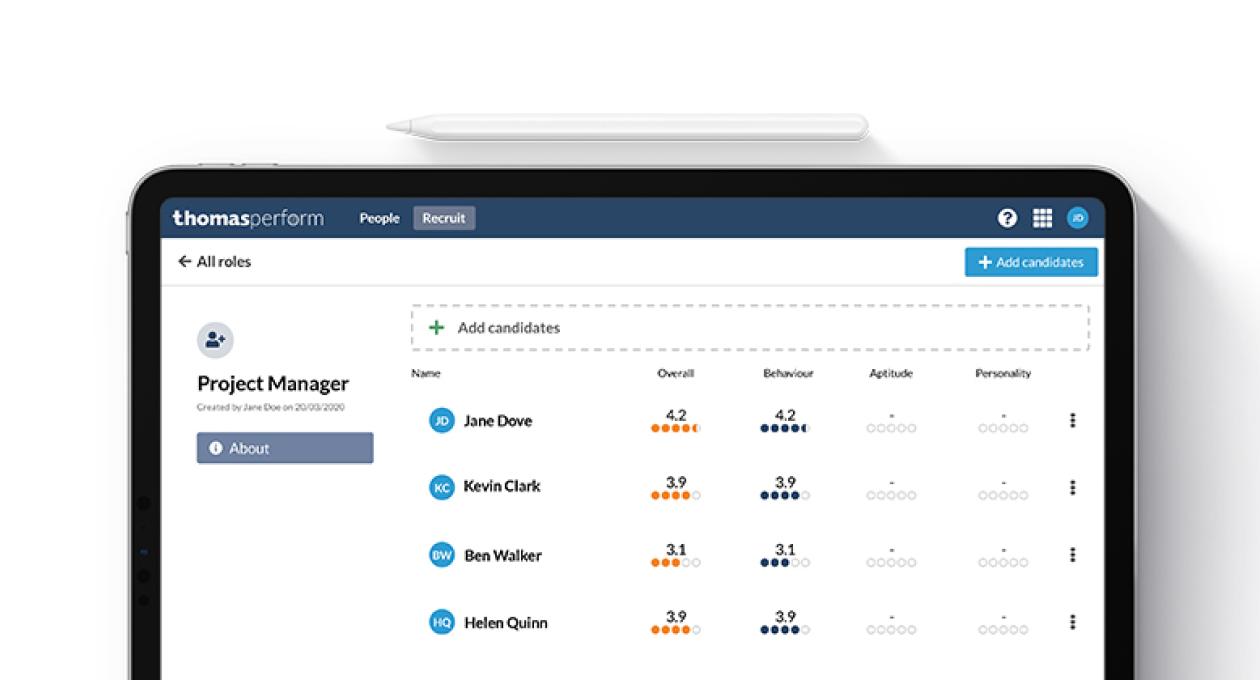It’s all too easy to find a way to connect with a candidate – perhaps you both went to the same university, worked at the same company in the past, or support the same football team.
This can also work in reverse – you can form a negative opinion of a candidate based on their university (or if they didn’t go to university), a previous employer or one of their hobbies.
Another pitfall is being able to differentiate candidates – if they have similar skills and experiences, which do you choose without letting your instinct make the decision for you?
Create a level playing field
The Thomas talent assessment platform makes it easy for you to make a choice from a much more objective viewpoint. When creating a job role within the Recruit section of Thomas Perform, you begin by defining the learning environment of the role. Is it an entry-level position, a management role, or something in between? What level of on-the-job learning is involved – none, initial learning, some ongoing learning, or are you constantly learning in the role?
Then the pace of the role comes next – very fast paced, relatively slow, or somewhere in the middle? Finally, you set how varied the role will be. These four selections relate to the candidate results in the Thomas Aptitude assessment.
The next step when creating a job role within Thomas Perform requires you to select the three core characteristics required for it, from a list of nine. Do you need someone who is analytical, decisive and emotionally resilient, or perhaps someone who is communicative, driven and independent?
It’s your choice, but this part needs careful consideration to make sure that you select the characteristics that are absolutely vital to the role – without them, the candidate could be likely to fail. Your selections here enable the platform to compare the results from candidates’ Behaviour and Personality assessments.
Compare candidates objectively
The results are then displayed in simple star ratings so that they can be easily interpreted with a glance, showing you which candidate is closest to the aptitudes and characteristics that you feel are most essential for the role.
This objectivity is essential in recruiting today and can be easily standardised across all of your recruitment to reduce unconscious bias in your recruitment decisions, thereby protecting your company’s reputation while ensuring you get the best fit candidate for the role.
To learn more about the star ratings, take a look at this video that I’ve recorded to show how simple it truly is to objectively identify the best candidate for your role.




